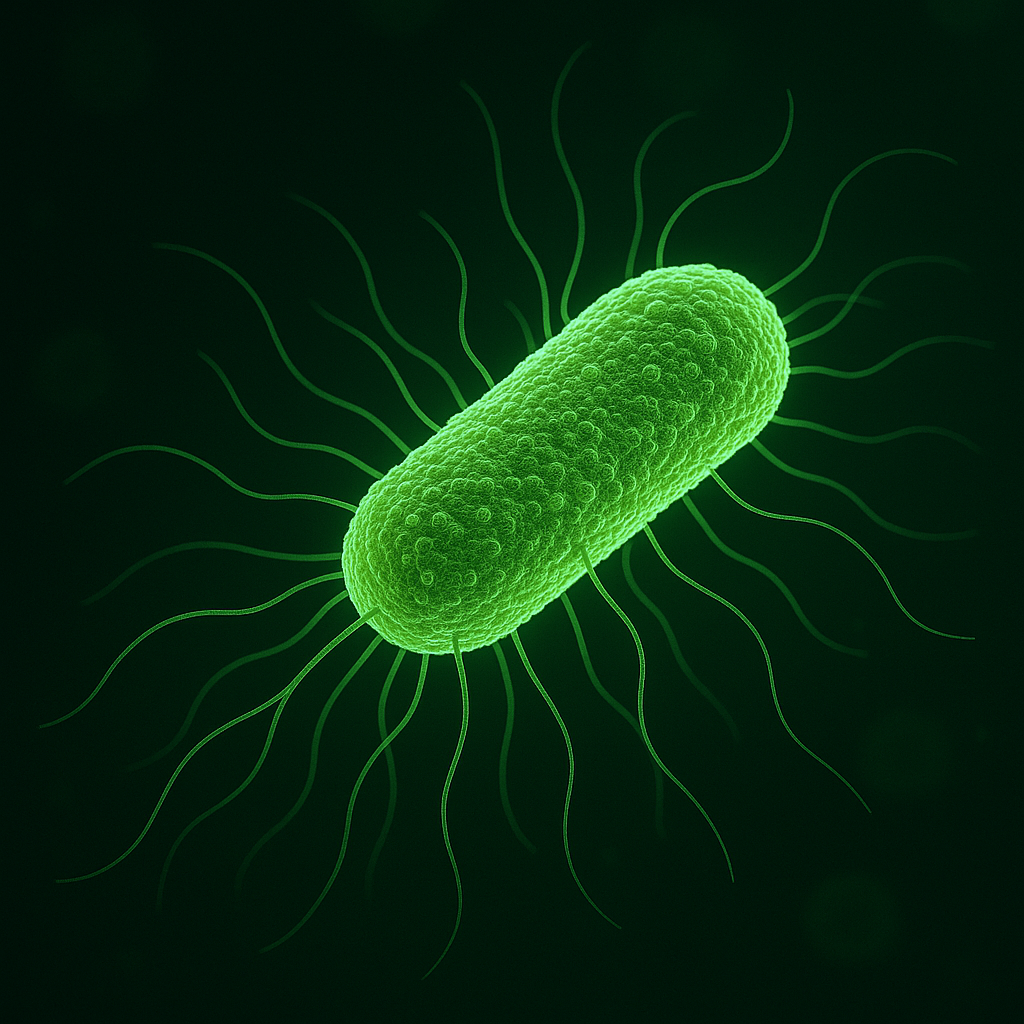Genetically engineered E-Coli
- Starting Point: Researchers began with a naturally occurring E. coli genome. Rather than creating a genome de novo, they systematically replaced redundant genetic codons within the existing bacterial DNA.
- The Genetic Rewrite: There are 64 codons in the genetic code (triplets of DNA letters A, T, C, G) that instruct cells how to build proteins. Of these, several codons are redundant—they encode the same amino acid. In Syn57, scientists eliminated seven codons (four serine codons, two alanine codons, and one stop codon) by replacing them with synonymous alternatives.
- Scale of Modification: This undertaking involved more than 101,000 codon replacements across a ~4-megabase genome—a massive feat of genetic engineering.
- How It Was Done: Researchers broke the genome into numerous ~100 kb fragments (38 segments by some accounts) and synthesized each recomposed fragment. These synthetic pieces were then inserted into live E. coli strains using advanced genome-editing methods such as CRISPR-Cas9 and lambda-Red recombination (specifically, the “uREXER” technique).
- The Resulting Organism: The final Syn57 strain is alive, capable of growth and reproduction, but exhibits a slower growth rate—approximately four times slower than its natural predecessor.
⸻
So, Is Syn57 Fully Synthetic?
No. While Syn57 features a heavily engineered and synthetic genome, it is derived from the natural E. coli organism. The researchers did not build an entirely new bacterium from scratch (as was done in other projects like JCVI-syn3.0). Instead, they modified the existing E. coli genome to dramatically streamline its genetic code while retaining viability.
⸻
Why This Matters for the General Public
This landmark achievement exemplifies the power of synthetic biology: scientists can now recode living organisms to operate with a reduced genetic alphabet—only 57 codons instead of the usual 64. This opens the door to novel applications:
- Virus Resistance: By removing codons that viruses rely on to hijack cellular machinery, Syn57 could be inherently resistant to certain infections.
- Bio-manufacturing: The freed-up codons may be repurposed in the future to encode non-standard amino acids, enabling the bacteria to produce new types of proteins or materials.
- Fundamental Insights: Syn57 helps illuminate how life can adapt to radically simplified genetic instructions—offering profound insight into biology and evolution.
⸻
In summary: Syn57 is not a wholly synthetic bacterium built from the ground up, but rather a deeply recoded version of natural E. coli. It stands as a testament to what can be achieved through the deliberate redesign of life’s fundamental code.
Future Implications of Syn57
1. Expanded Genetic Code & Novel Biochemical Capabilities
- By condensing the genetic code from 64 to 57 codons, Syn57 frees up “unused” codons that can be reassigned to encode non-standard amino acids—chemicals not found in nature. This enables the synthesis of entirely new proteins, polymers, and macrocycles with novel properties.
- Successors like Syn61 (a prior iteration) already demonstrated this capability; Syn57 offers even more space for expansion, heralding broader applications.
- 2.Built-In Viral Resistance for Biomanufacturing
- Syn57’s radically modified genetic code makes it incompatible with most naturally occurring viruses, which rely on the standard 64-codon template. This acts as a genetic firewall, offering intrinsic resistance to viral infection in industrial strains—enhancing the reliability and safety of producing biologics like vaccines and therapeutic proteins.
- 3.Biosafety and Biocontainment
- Beyond immunity, Syn57 offers enhanced biocontainment. Because its genome is decoupled from natural codon usage, horizontal gene transfer—the movement of genes between organisms—is severely restricted. This dramatically minimizes the risk of synthetic genes spreading into natural ecosystems.
- 4.Platform for Next‑Generation Materials and Medicines
- Syn57 is potentially a foundational platform for efficient biomanufacturing—from biodegradable plastics and biosensors to custom enzymes for medicines and industrial chemistry. The ability to program new chemistries could transform multiple sectors.
- 5.Decoding Life and Evolution
- On a scientific level, Syn57 allows deep exploration into how life can operate under a compressed genetic code, offering insights into molecular evolution, genome design, and the fundamentals of biological information processing.
⸻
Timeline for Practical Applications
| Phase | Period | Approximate Timeline | Key Milestones |
| Current Research & Refinement | Basic Science | 2025–2027 | Improving Syn57 growth rate (currently ~4× slower than wild-type) ; ^[validating viral resistance and code reassignment. |
| Pilot Applications | Translational Research | 2027–2030 | Deployment of Syn57-based strains in limited-scale drug manufacturing or specialty chemicals; optimization of non-standard amino acid incorporation. |
| Industrial & Commercial Roll-Out | Adoption Phase | 2030s | Broader use in large-scale pharmaceuticals, advanced materials, and secure bioproduction with regulatory approval. |
| Widespread Integration & Novel Products | Maturation Phase | 2035+ |
Supporting Evidence & Expectations:
- Syn57 currently exhibits a fourfold slower growth rate compared to natural E. coli. While a significant hurdle, researchers anticipate overcoming this through refinements in genome design and evolutionary adaptation.
- The previous version, Syn61, is already being used to enhance the reliability of drug production, suggesting Syn57 could follow suit once optimized.
- The promise of virus-resistant production strains is especially compelling for industries that suffer from contamination and downtime—highlighting near-future applications in biomanufacturing.
- Safety and control concerns regarding genetically modified organisms (GMOs) remain; Syn57’s biocontainment potential is a crucial advantage that may ease regulatory acceptance over time.
⸻
In Summary (Formal Opinion)
Syn57 is not merely a scientific curiosity—it is a groundbreaking platform poised to reshape how we engineer life. By radically streamlining the genetic code, Syn57 unlocks transformative possibilities: designing tailor-made proteins, ensuring virome-proof production strains, securing biological containment, and enabling previously unimaginable materials and therapeutics.
Nevertheless, realizing these benefits in practical, commercial contexts will require time. Based on current research trajectories, we can conjecture that real-world applications—particularly in high-stakes fields like pharmaceuticals and advanced manufacturing—will likely emerge in the late 2020s and early 2030s, with widespread industrial integration unfolding throughout the **2030s and beyond
